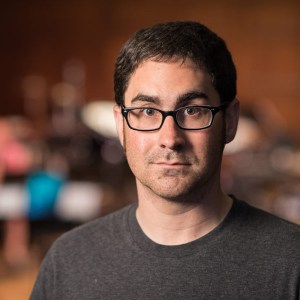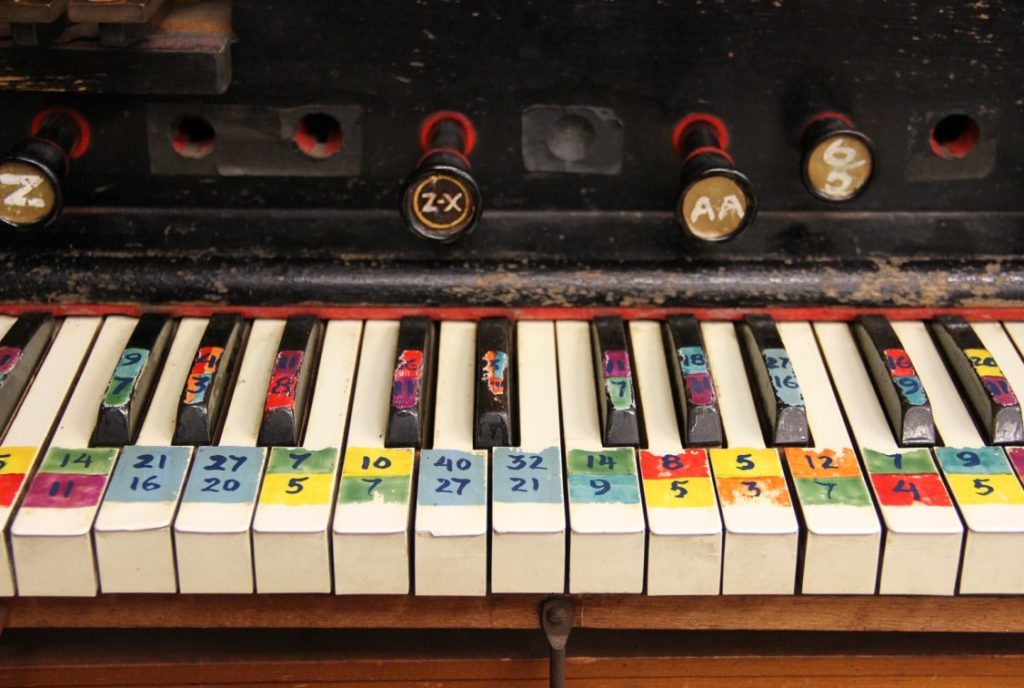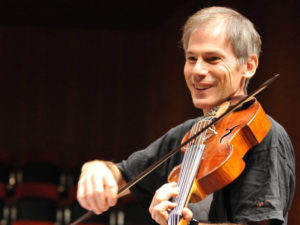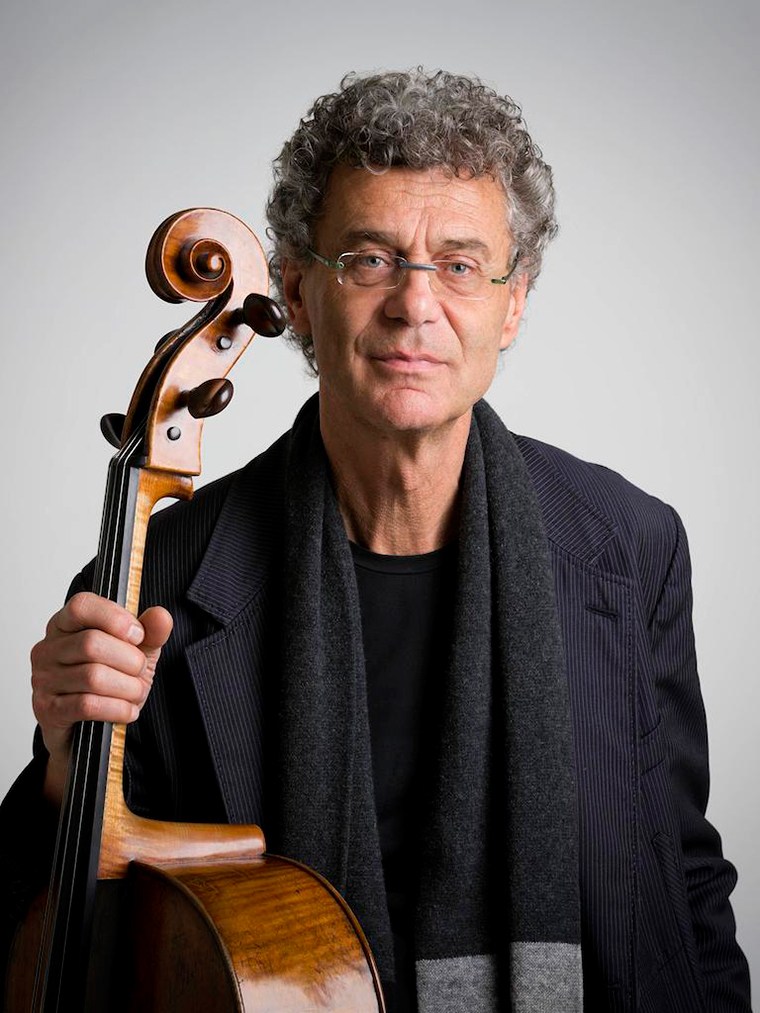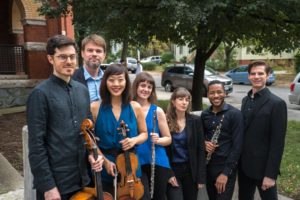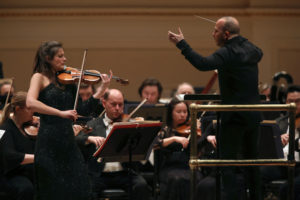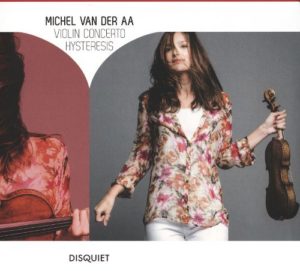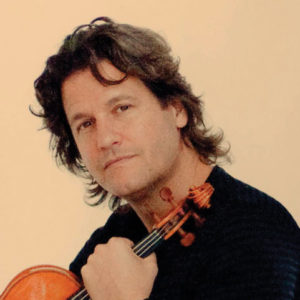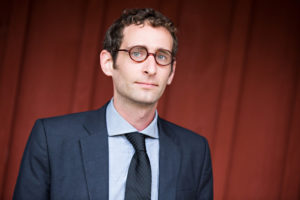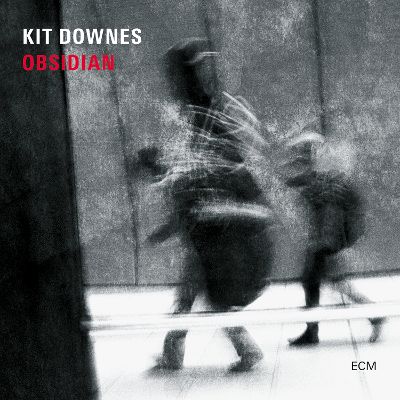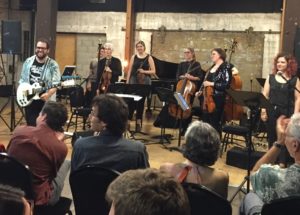 On Cinco de Mayo, Art Share in Los Angeles was the venue for Music for Art Galleries, a concert of music by composer Nick Norton. The occasion was the completion of Norton’s Doctoral studies at the UC, Santa Barbara and a large crowd gathered to hear a program of no fewer than ten pieces of his music. A dozen of the top musicians in the Los Angeles new music scene were on hand to perform what proved to be an intriguing variety of original works.
On Cinco de Mayo, Art Share in Los Angeles was the venue for Music for Art Galleries, a concert of music by composer Nick Norton. The occasion was the completion of Norton’s Doctoral studies at the UC, Santa Barbara and a large crowd gathered to hear a program of no fewer than ten pieces of his music. A dozen of the top musicians in the Los Angeles new music scene were on hand to perform what proved to be an intriguing variety of original works.
The program opened with Mix Bus 09, an electronic piece that filled Art Share with a deep rumbling roar, a bit like an idling motorcycle engine mixed with static electrical discharges. The entire venue was darkened, and this served to amplify in the mind the already loud and menacing sounds. The volume increased to an overwhelming industrial level, and then tapered back down as the lights came up to begin the next piece.
Song for Justine and Richard (On a Lyric by Conor Oberst) began immediately, written for and performed by vocalist Justine Aronson and pianist Richard Valitutto. The contrast with Mix Bus 09 could not have been more pronounced as Song for Justine and Richard began with series of quiet notes in the piano followed by warm and welcoming chords. The voice joined in with strong, sustained tones that floated above, creating a lovely mix. The was a sense of the mystical mixed with the exotic, but nicely avoiding the overly sentimental. The singing, naturally, was precisely matched to the piano accompaniment and the result was a beautiful and touching piece.
Monet in Greyscale followed and this was for string quartet featuring soft, feathery trills in the viola and cello offset by long, arcing tones in the violins. An ethereal and airy sensibility predominated, even as the cello and viola phrases became increasingly active. The steady tones in the violins insured that the overall feeling was always calming and restful, and the piece coasted to its finish on a warm finishing chord. Monet in Greyscale is a remarkable mixture of the complex and the sustained, resulting in an unexpectedly restful tranquility.
Music inspired by nature followed. Quiet Harbor for flute, bass clarinet, cello and violin combined slightly discordant notes to create a settled, if solitary and remote feeling, as if coming upon a far-off anchorage after a long sea voyage. Darkly mysterious tones from the bass clarinet mixed with very high pitches in the flute and violin to create an intriguing blend that evoked just a touch of melancholy. The more active Broken River Variations for piano, violin and viola had all the movement and stridency of a rapidly flowing stream. Repeated chords in the piano with longer, sustained tones in the strings gradually tamed the roiling texture to bring a sense of direction and purpose, as the headlong rush of a stream might become the ordered flow of a small river. At the finish there was a pronounced rolling feel to the rhythms, in keeping with the character of a fully grown river. Broken River Variations is a well-crafted portrait of a watercourse as it transitions from youth to maturity.
